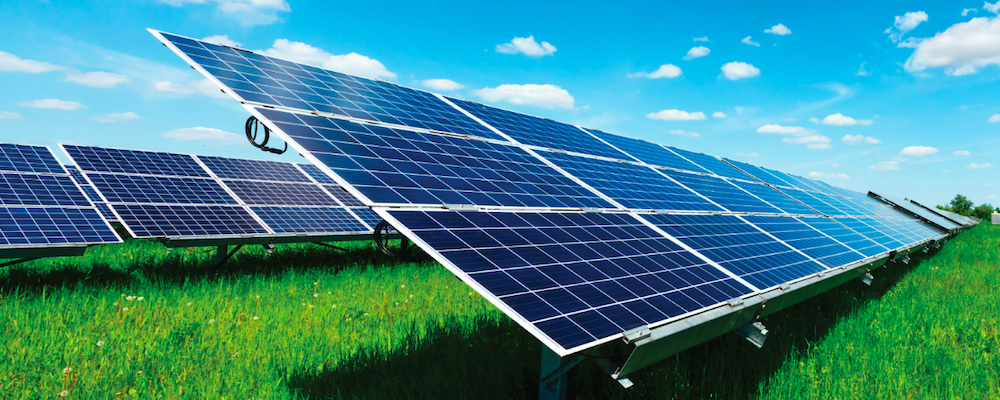
It’s now been a year since the passing of the Inflation Reduction Act (IRA), the $700 billion bill that provides money for renewable energy projects, infrastructure investments, and expanding domestic manufacturing. It is the most significant investment in clean energy infrastructure in the United States ever.
One key exciting opportunity from the bill is its potential for investment in the United States. Many incentives are available only to companies investing in, sourcing from, or opening up branches within the U.S.
So has the IRA lived up to its potential? There are promising results, especially for home solar. While there is room for improvement, the IRA has undoubtedly created momentum for renewable energy investments here and abroad.
What has the IRA achieved so far?
Over half of the funding in the IRA was intended to improve energy security and climate-focused initiatives. After the U.S. ended its commitments to the Paris Climate Agreement, the passing of the IRA signaled to the rest of the world that the U.S. was ready to be fully present in the green energy future. Despite just a year since it passed, the bill has created a positive impact in a few ways.
Expanding tax credits and rebates for homeowners
Many incentives were built into the IRA to encourage home and business owners to invest in clean energy. In total, $43 billion is earmarked for consumer incentives.
One of the most notable was the expansion of the federal solar tax credit, which restored the incentive value to 30% of installation costs and made it available for the next ten years. This was huge news for the residential solar industry, as the tax credit was set to expire entirely in 2024.
The bill also included several rebates for other clean energy upgrades, like revamping the federal electric vehicle tax credit, creating a used EV tax credit, and expanding electrification and energy efficiency rebate programs. These programs are helping states meet their climate initiatives.
Take Maine, for example, where the state has exceeded its initial goal of installing 100,000 heat pumps by 2025. Though the initial push to get heat pumps in Maine wasn’t because of the IRA, the continued expansion of the technology in the state is likely getting a boost because of it.
Increased domestic manufacturing
There is evidence that things are moving in the right direction rather quickly when it comes to domestic manufacturing. Investments have been made in nearly all U.S. states, from expanding a QCells solar panel manufacturing plant in Georgia to LG Chem building an EV battery cathode factory in Tennessee.
A report released by the Environmental Defense Fund in March 2023 projected that the U.S. could produce almost 4.4 million by 2026. Major car manufacturers like Kia and Hyundai have announced plans to open factories or partner with battery manufacturers in the United States.
In total, at least 83 renewable energy manufacturing plants, including solar, wind, and utility-scale battery plants, have been announced or planned to expand, thanks to generous incentives included within the bill.
Clean energy job expansion
Increased investment in home energy projects and domestic manufacturing has supported the growth of businesses and thus created jobs across the country. Early in 2023, SolarReviews released the results of our Solar Industry Survey, which showed that 62% of installers expected to expand their business as a result of the IRA.
A report published by the nonprofit Climate Power estimated that 100,000 new clean energy jobs were created six months after the IRA was passed. Nearly 30,000 jobs have been gained in the manufacturing industry alone.
Global climate investments
Because the Inflation Reduction Act incentivizes American investments, so foreign companies have opened up new factories within the United States.
To avoid losing out to the U.S., other countries are looking to invest in their own workforces. The European Union created the Net-Zero Industry Act, its own policies to encourage clean energy growth across the continent. Investments in clean energy, no matter what part of the world, is good news for the entire planet.
We can’t stop at the Inflation Reduction Act
As we mentioned, the IRA is the most significant investment in renewable energy in the U.S. ever, but that doesn’t mean the bill is perfect. The clean energy industries, specifically the solar industry, need more support. Here are just a few of the improvements necessary for the residential solar industry to reach its full potential:
Streamlined permitting
Permitting for most types of construction is quite complex and difficult to navigate. Residential solar is no exception. Permit requirements for home solar typically vary from town to town - some require electrical permits, some have special solar permits, and others require certain construction permits.
Aside from different requirements, each town usually has a different permitting submission process. It could be an easy online application in one town, while the neighboring town requires physical paperwork that takes a while to get approved. These permitting hold-ups can cause a headache for solar companies and increase the job's overall cost.
There are solutions, like SolarAPP+, a streamlined permitting application that can be used in any jurisdiction throughout the U.S., developed by one of the nation’s leading renewable energy research labs, NREL. 32 communities have adopted SolarAPP+, saving an estimated 15,000 hours in review time. If strong federal or state action was taken to enforce streamlined solar permitting processes like SolarAPP+, home solar could be cheaper, and the number of projects could increase.
Job training
Our 2022 Solar Industry Survey found that one of the biggest challenges solar installation companies face today is finding skilled workers. 63% of respondents said the IRA wouldn’t impact the ability to find workers. So, while the IRA created jobs, it didn’t develop programs to make skilled workers who could fill those positions.
The country has already seen a shortage of skilled workers like electricians, and they will be even more in demand as renewable energy projects grow. Federal or state support for renewable energy and technical job training programs is necessary to create the workforce needed for the clean energy transition.
Electric grid updates
The U.S. electric grid also needs an overhaul. There’s no doubt about it; the electric grid is an engineering marvel. But, it was built for traditional fossil fuel deployment and isn’t set up for widespread, large-scale renewable generation.
Making a greener and more resilient grid requires a substantial amount of investment. If we want to make it to net zero energy by 2050, 600 billion dollars would need to be invested in grid upgrades globally each year through 2030.
The U.S. is putting money into updating the grid through the GRIP (Grid Resilience and Innovation Partnerships) program, which allocated $2.5 billion to Grid Resilience Utility and Industry Grants, $3 billion in smart grid grants, and $5 billion towards grid innovation programs. However, to truly reach climate goals, the U.S. would need to ramp up its grid spending to give the electricity distribution system the overhaul it needs to support green energy.
Thanks to the IRA, a new economy will flourish
The IRA is a historic piece of legislation, and the impacts of it are already being felt. But, the fight is far from over. Passing laws that encourage and incentivize renewable energy is only part of the equation. To fully embrace the green energy future, access to job training and the ability to add renewable power to homes across the country efficiently is necessary.
But the United States is quickly working towards an economy that prioritizes green energy, building a workforce ready to contribute to the phase-out of fossil fuels and building the infrastructure to make this a reality.
If you are a homeowner eager to shift towards renewable energy, find an installer here and claim the 30% tax credit for yourself.
